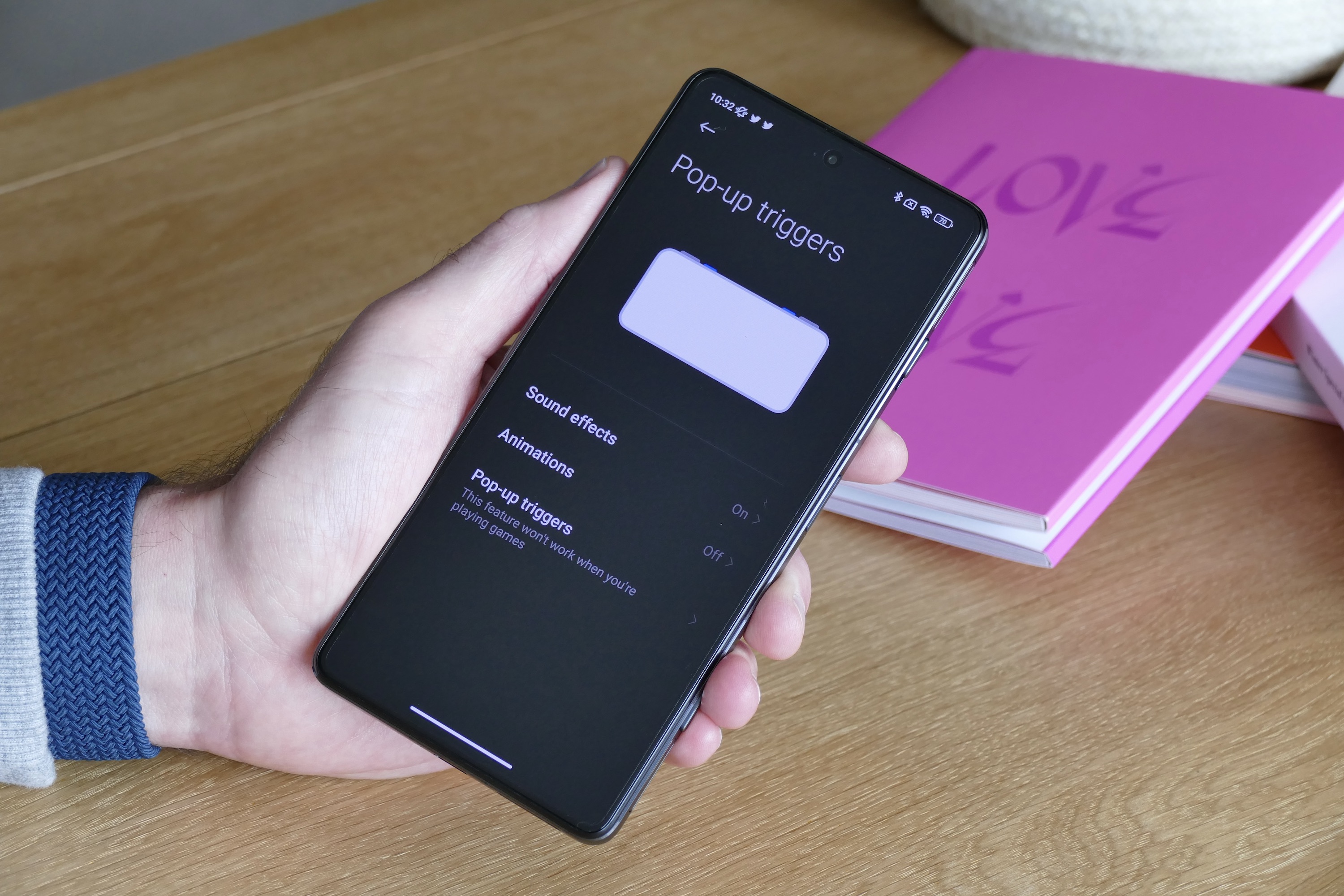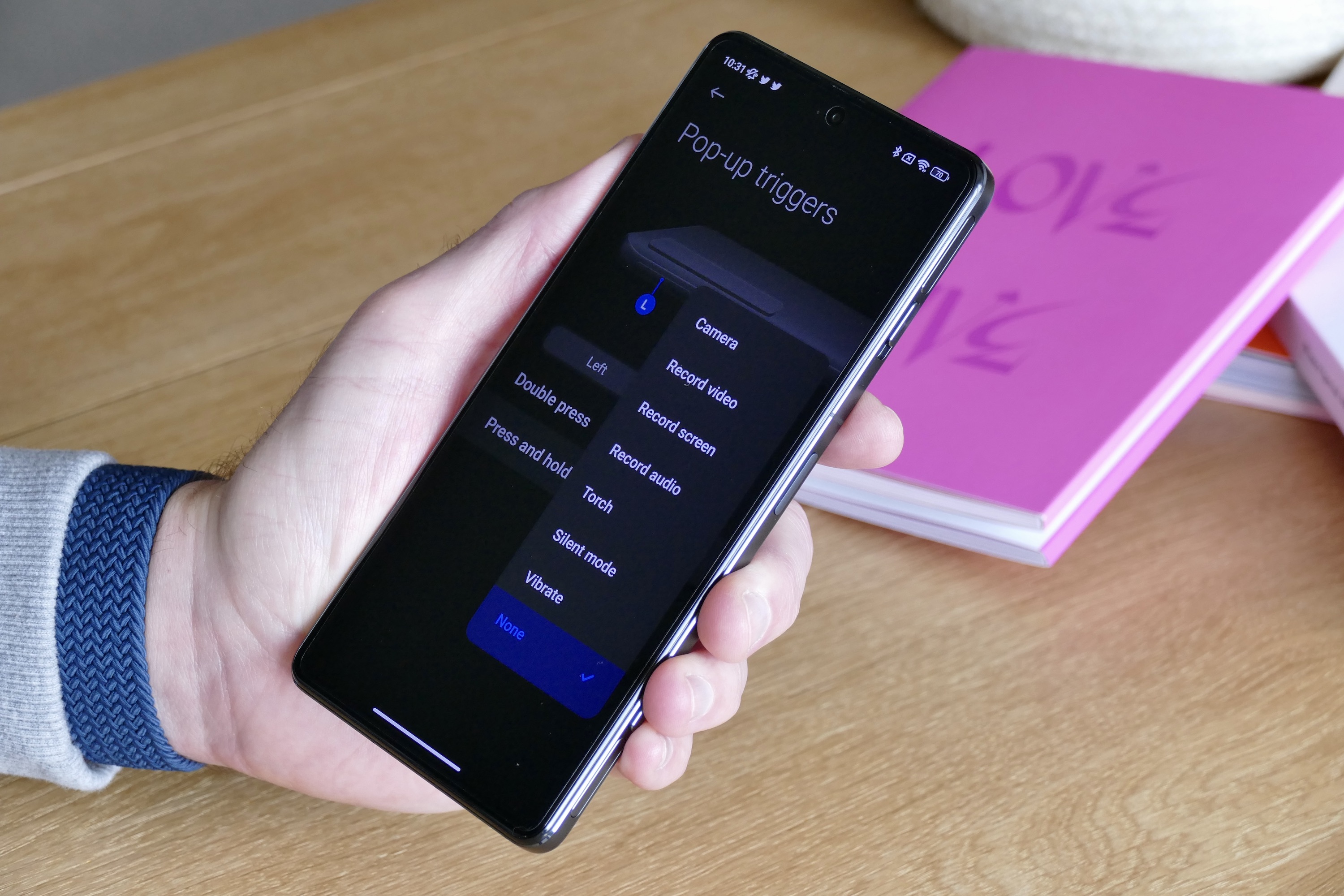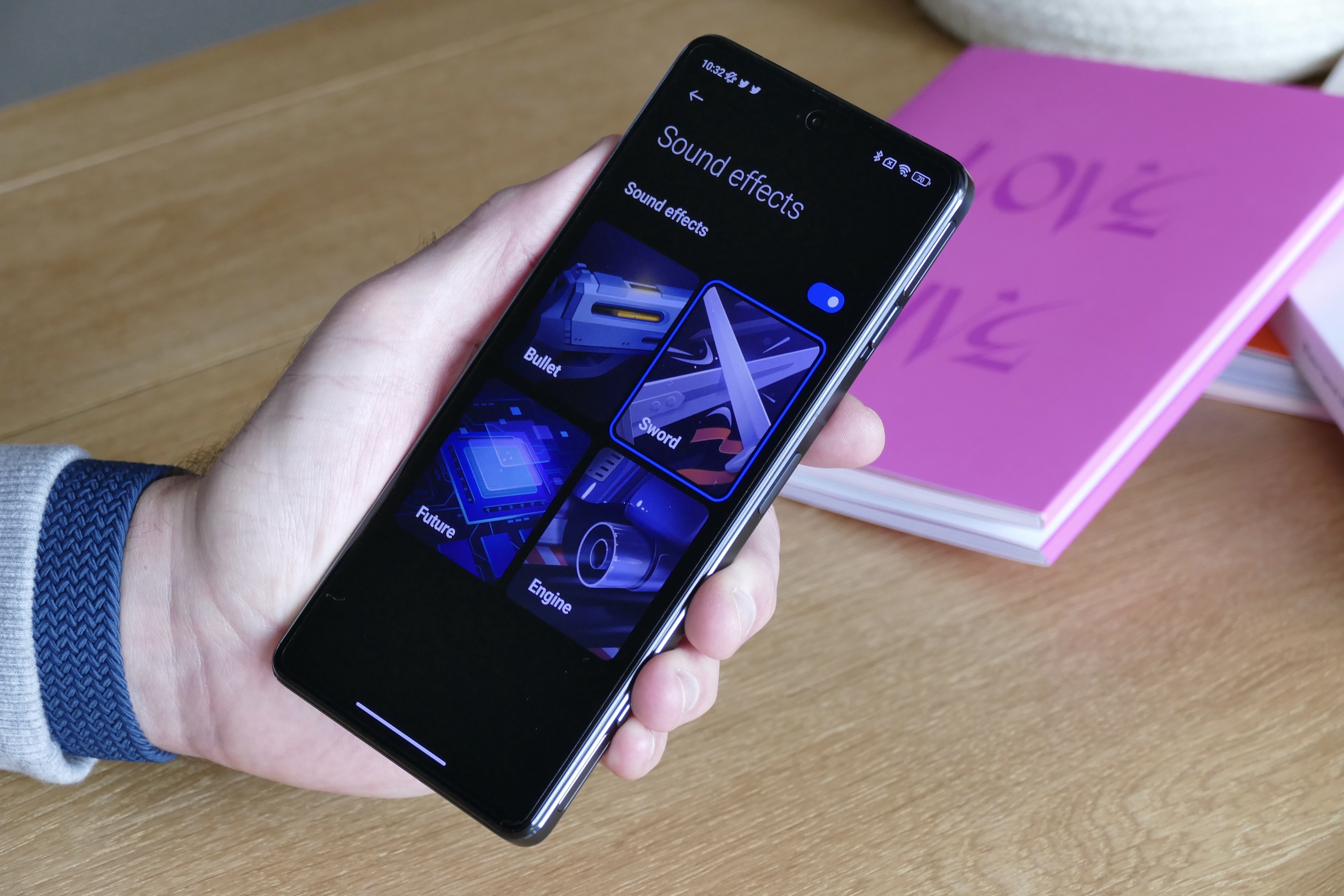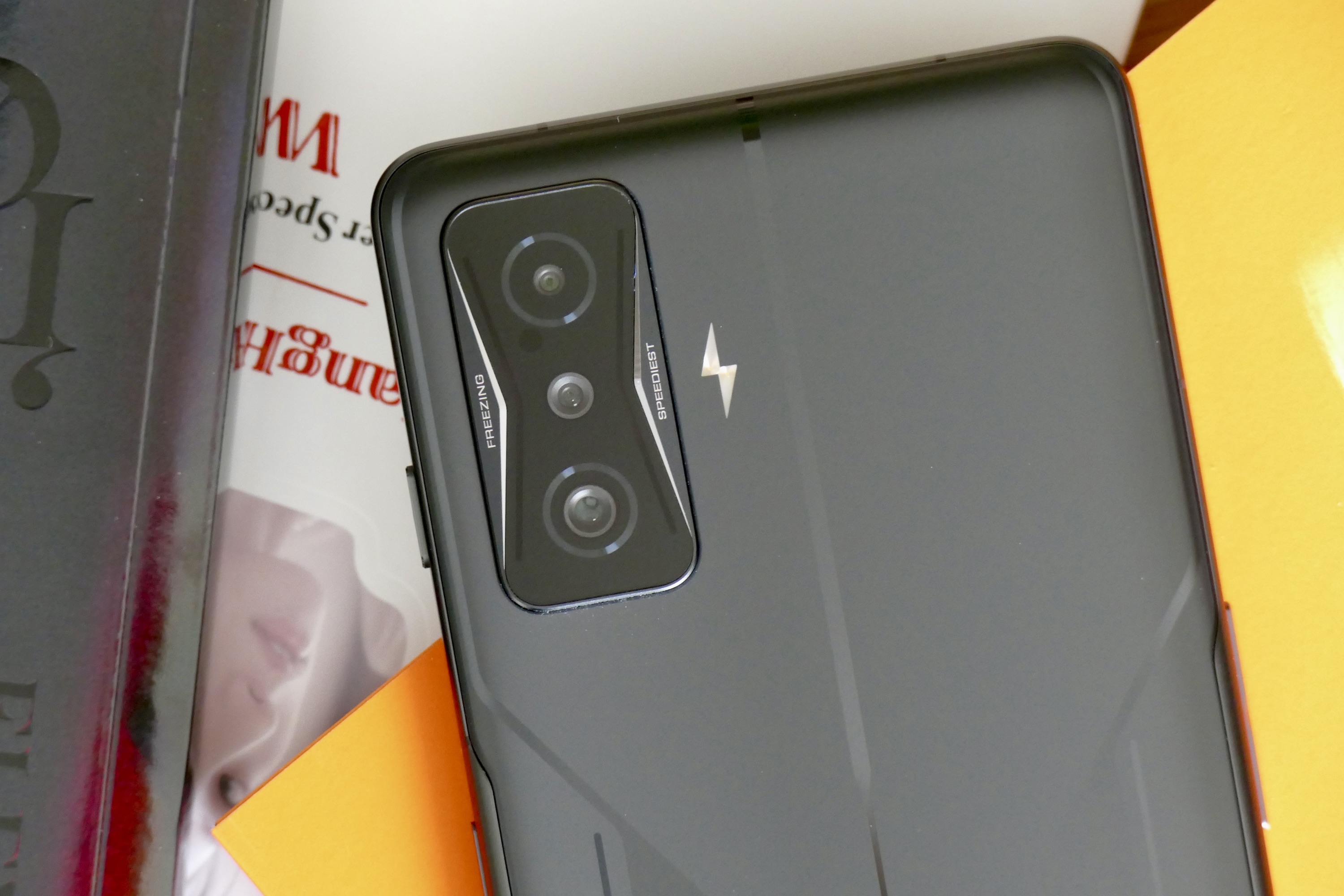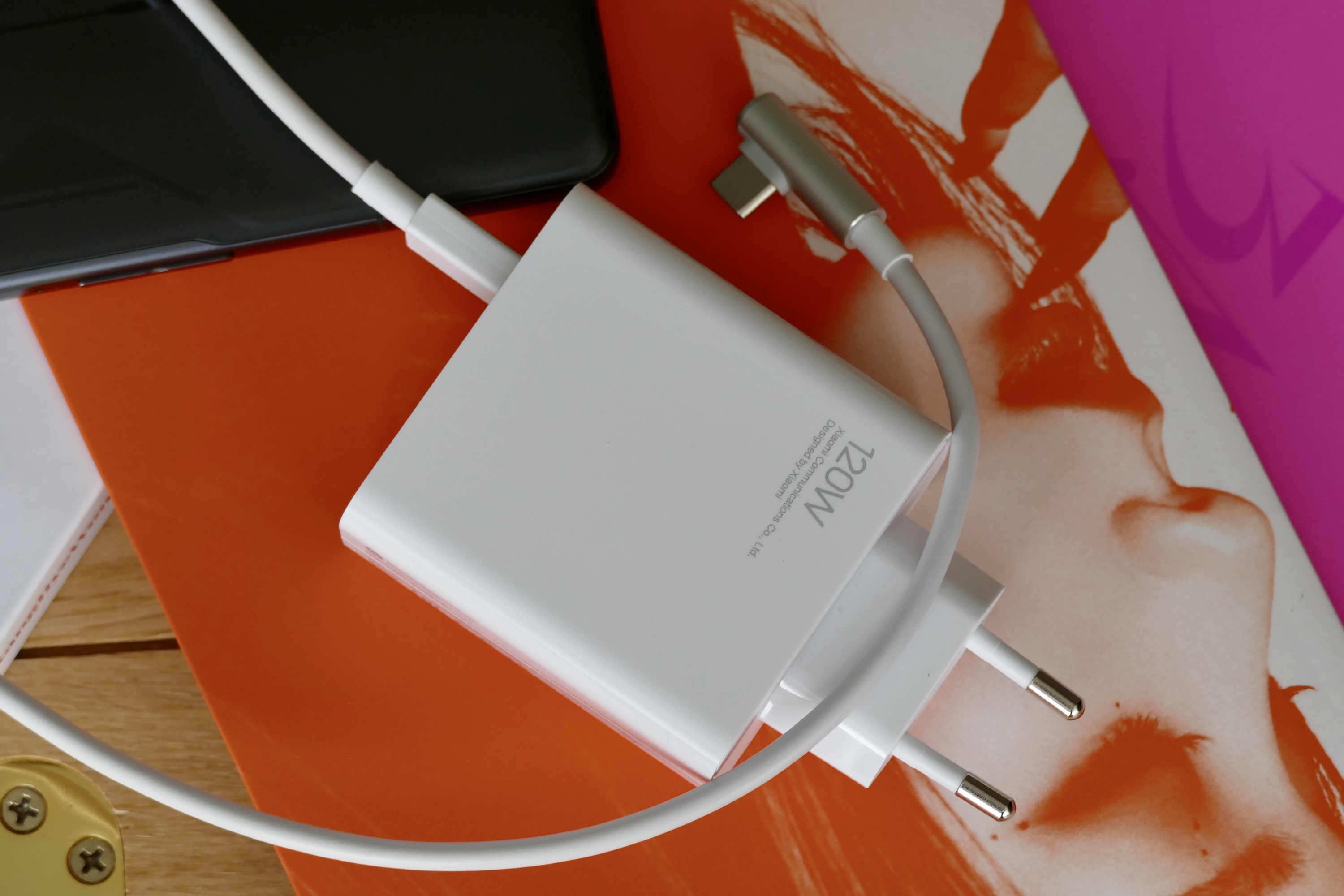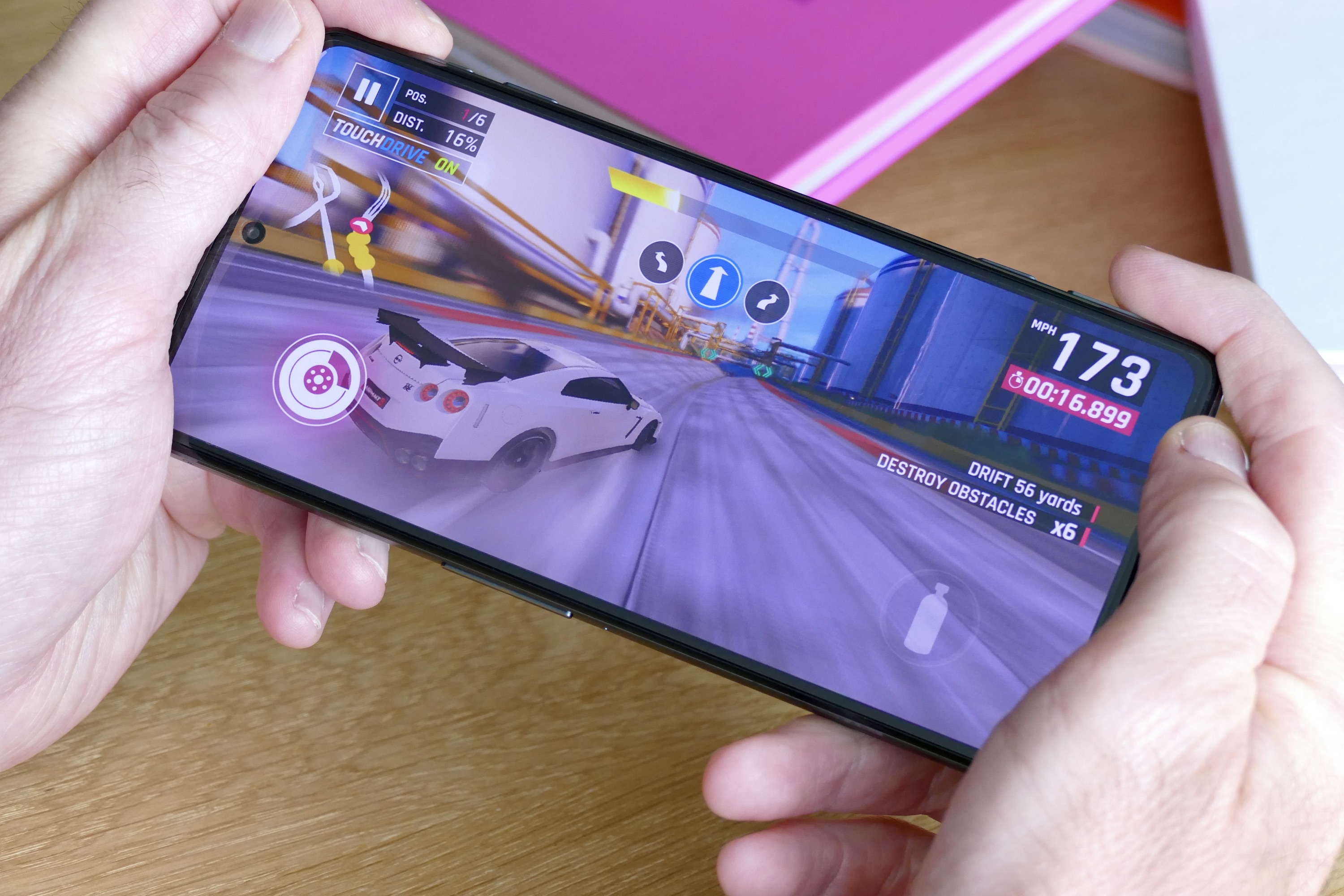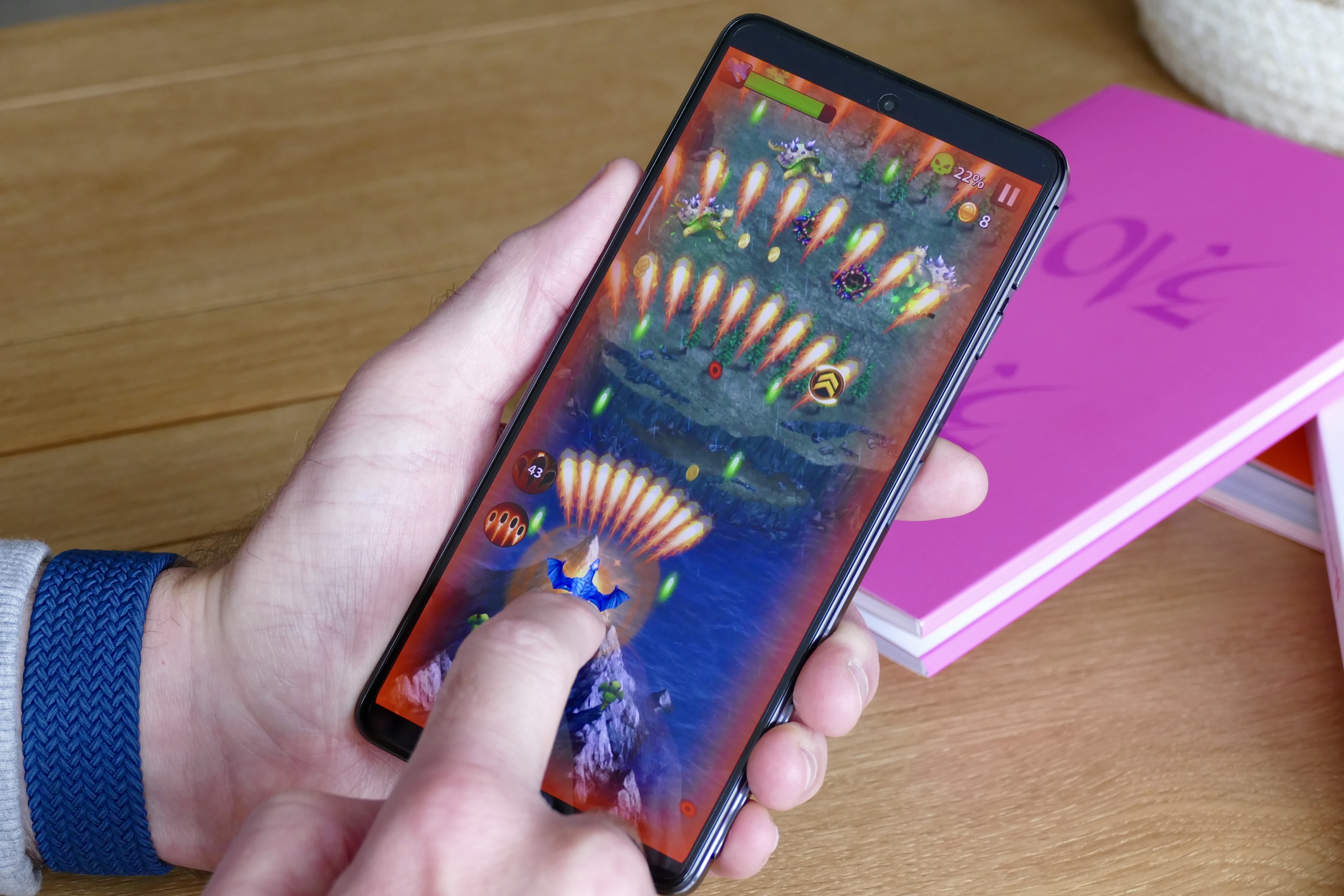Poco knew how to grab our attention with the new F4 GT gaming phone, saying it has “pop up magnetic buttons” that pop up out of the device’s shoulders. Now that’s a gimmick worth seeing, but does it actually make any difference to gameplay, or is it all for show? It turns out the feature is a winner, albeit not quite as cool as the name suggests, so we’ve taken a look to see if the rest of the phone is just as good.
Buttons and switches
The Poco F4 GT’s shoulder buttons are suitably different from those seen on phones like the Asus ROG Phone 5 and the Nubia Redmagic 7 Pro, but to describe them as magnetic makes them sound flashier than they actually are. Here’s how they work. When you look at the side of the F4 GT you see two sliders and two hidden buttons. Slide the sliders to the side (sorry, not sorry) and the hidden buttons pop out. When they’re active they feel exactly like normal physical buttons.

The magnets in question are part of the mechanism, at least that’s what I take from Poco’s description of how they work, so the operative phrase to remember when understanding these buttons is “pop up.” It’s this aspect that gives the F4 GT’s buttons an advantage over the virtual buttons we’re more used to seeing.
Physical buttons are simply more precise than a virtual button, and because they stand proud of the case, they are easier to locate and press quickly. If your fingers ever “wander” from a virtual button, that frustration is not something that will affect you with the F4 GT.
This is how the Poco F4 GT’s ‘magnetic’ shoulder buttons work.
No, I don’t really know what makes them magnetic, why it says ‘freezing’ and ‘speediest’ next to the camera, or why the flash is shaped like Harry Potter’s scar. 🤷♂️ pic.twitter.com/g4qnONIPok
— Andy Boxall (@AndyBoxall) May 5, 2022
However, ergonomics still suffer. Hiding the physical shoulder buttons is good because it means they can’t be accidentally pressed, but they’re activated using two quite larger sliders which ruin the sleekness of the phone and can be easily slid aside either accidentally or purposefully. The motion is slick enough that they have the same appeal as a fidget spinner, unfortunately.
I appreciate the reliability of physical controls, but I’d have loved to see an on-screen system to make the buttons pop up. It would have made for a sleeker-looking phone, emphasized any magnetic aspect in the motion, and overall made the F4 GT feel more special.
Do they work?
The Poco F4 GT’s shoulder buttons do work well, but you have to jump through a few hoops to get them going. They’re configured like other examples, where you move on-screen indicators over the virtual buttons you want to link to the physical buttons. It’s easy to do once you’re there, but to get there it’s essential you add your games to Poco’s gaming mode called Game Turbo.

Game Turbo recognized Genshin Impact automatically for me, but not Asphalt 9: Legends or Dragon Shooter. If the games aren’t in Game Turbo’s menu, then you can’t access the settings for the shoulder buttons or activate any of the other features like the performance booster. Once set up, the buttons are large enough to be used quickly and the action is precise too. I did find they weren’t always accurate though, but this likely depends on the game rather than the buttons.
For example, configured to work in Asphalt 9: Legends the game would often fail to recognize two presses in quick succession to activate the highest level of boost and stop the boost instead. I didn’t notice these inaccuracies in Genshin Impact though. Poco says the buttons have been tested with more than 100 games from the Google Play Store but does not specifically mention which ones.
There’s the option to configure the buttons for other actions when used outside of a game. For example to open the camera app or take a screenshot. How much use you get from this depends on the feature you link it with. Flicking the switch and double-tapping the button isn’t really much quicker than tapping an app icon, but I appreciate the additional functionality.
Slightly odd ergonomics and less than user-friendly setup aside, the Poco F4 GT’s shoulder buttons are excellent and really can transform your gaming provided you’re serious about games with multiple controls, like Genshin Impact, Call of Duty Mobile, Fortnite, or PUBG.
Gaming without the flashiness
For a gaming phone, the Poco F4 GT isn’t that ostentatious, but only if you get it in the Stealth Black or Knight Silver colors, as the Cyber Yellow with its black accents is far more eye-catching. There are some bizarre stylistic additions though, and I still can’t work out why it says “freezing” and “speediest” next to the camera lenses.

It still has all the right internal specifications for a gaming phone. The Qualcomm Snapdragon 8 Gen 1 processor comes with either 8GB RAM and 128GB storage space, or 12GB RAM and 256GB storage, plus there’s a dedicated cooling system to ensure top performance when playing power-hungry games. The 6.7-inch AMOLED screen has a 120Hz refresh rate and 480Hz touch sampling, plus it’s under flat glass to please gamers too.

The sound from the quad speakers is excellent. They’re sensibly placed on the body so you don’t cover either with your hands, which also benefits the soundstage. I’ve enjoyed watching videos on the F4 GT a lot, and the way it handles sound plays a very big part in this. The phone is quite thick and heavy at 216 grams and 8.5mm, which makes it not only a little fatiguing to hold over time, but is also annoying in your pocket.
Any downsides?
The shoulder buttons, screen, performance, and sound are among the reasons to really like the Poco F4 GT, as is the fast 120W charging. This took the 4,700mAh battery to 65% in just eight minutes, and on to capacity in about 18 minutes. Cleverly, the USB Type-C plug is L-shaped, so it’s comfortable to hold the phone in landscape and continue playing even when it’s charging. Play games or watch high-resolution video and the battery life soon suffers though, and in addition to the usual activities, doing so for about three hours in a day will mean charging the phone every night in my experience.
However, there are two downsides to the F4 GT: The camera and the software. The phone is the same as the Xiaomi Redmi K50 Gaming Edition phone and uses the same MIUI 13 over Android 12 software. Xiaomi’s MIUI was once a rather clean, quite attractive, and speedy piece of software. It has steadily lost these attributes over the past few years, and I find the default settings now frustrating and unattractive and the software plagued with bugs.
Yes, MIUI is highly customizable so most aspects can be altered to your own preferences, but this shouldn’t excuse Xiaomi from providing a great out-of-the-box software experience. Bugs that affect the setup process don’t inspire confidence, and won’t make newcomers to the brand feel comfortable with their phones. I had similar issues with MIUI 13 when I used the Xiaomi 12 Pro. Despite the high refresh rate screen and top-of-the-range processor, MIUI 13 feels ponderous and jerky a lot of the time too.
This is a gaming phone so the camera was never going to be a selling point, but the 64-megapixel main camera, 8MP wide-angle, and 2MP macro camera is a tried-and-tested combination. As such it performs adequately, but the consistency is poor. Main camera shots can lack color and vibrance, while the wide-angle camera can oversaturate. Don’t even think about using the macro camera, the resolution is too low for decent photos.
Price and availability
The Poco F4 GT can be purchased through Poco via AliExpress at the moment for around $600 to $700 and will cost 599 euros when it launches in Europe soon. The phone will be officially released in the U.K. during May and the price has yet to be confirmed.
A good buy?
The Poco F4 GT’s unusual shoulder buttons work well and the price is competitive, making it a decent choice for mobile gaming fans that don’t want to splash out on the excellent Asus ROG Phone 5. However, the software lets the phone down and isn’t as reliable or as well-designed as competing platforms. If you’re not a hardcore mobile gamer and don’t think you’ll use the shoulder buttons that often, we’d recommend looking at the Realme GT 2 Pro instead, as it has a very similar specification but comes with a far better camera.
Editors' Recommendations
- You don’t need a gaming phone to seriously love mobile games
- At just $500, the high-performance Poco F2 Pro hits OnePlus and Samsung hard
